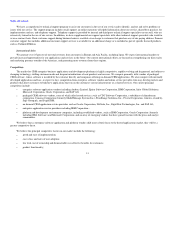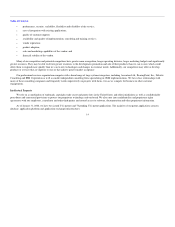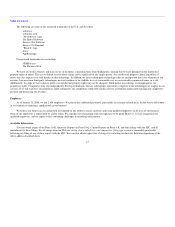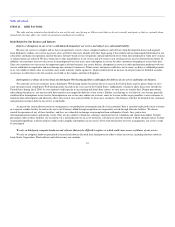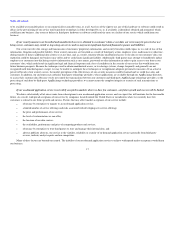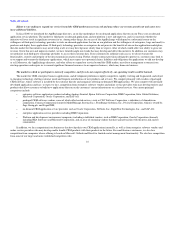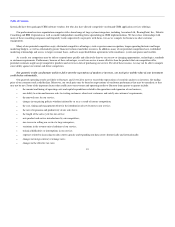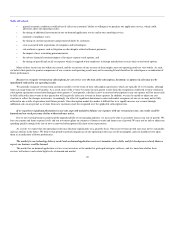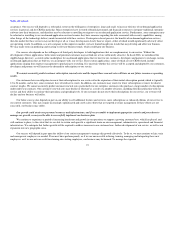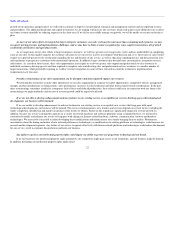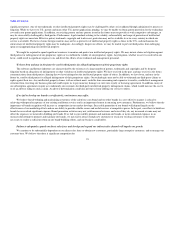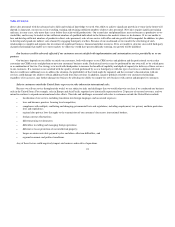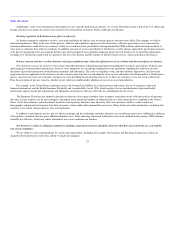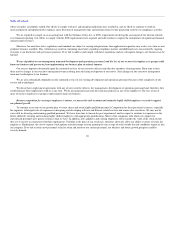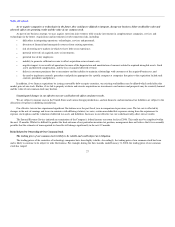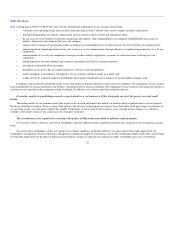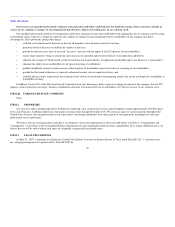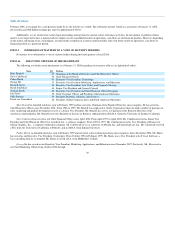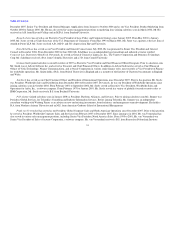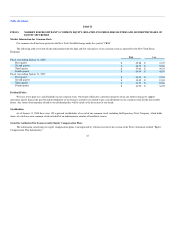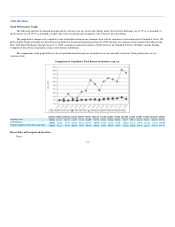Salesforce.com 2007 Annual Report Download - page 26
Download and view the complete annual report
Please find page 26 of the 2007 Salesforce.com annual report below. You can navigate through the pages in the report by either clicking on the pages listed below, or by using the keyword search tool below to find specific information within the annual report.
Table of Contents
significant expense. Any of our trademarks or other intellectual property rights may be challenged by others or invalidated through administrative process or
litigation. While we have two U.S. patents and many other U.S. patent applications pending, we may be unable to obtain patent protection for the technology
covered in our patent applications. In addition, our existing patents and any patents issued in the future may not provide us with competitive advantages, or
may be successfully challenged by third parties. Furthermore, legal standards relating to the validity, enforceability and scope of protection of intellectual
property rights are uncertain. Effective patent, trademark, copyright and trade secret protection may not be available to us in every country in which our
service is available. The laws of some foreign countries may not be as protective of intellectual property rights as those in the U.S., and mechanisms for
enforcement of intellectual property rights may be inadequate. Accordingly, despite our efforts, we may be unable to prevent third parties from infringing
upon or misappropriating our intellectual property.
We might be required to spend significant resources to monitor and protect our intellectual property rights. We may initiate claims or litigation against
third parties for infringement of our proprietary rights or to establish the validity of our proprietary rights. Any litigation, whether or not it is resolved in our
favor, could result in significant expense to us and divert the efforts of our technical and management personnel.
We have been and may in the future be sued by third parties for alleged infringement of their proprietary rights.
The software and Internet industries are characterized by the existence of a large number of patents, trademarks and copyrights and by frequent
litigation based on allegations of infringement or other violations of intellectual property rights. We have received in the past, and may receive in the future,
communications from third parties claiming that we have infringed on the intellectual property rights of others. In addition, we have been, and may in the
future be, sued by third parties for alleged infringement of their proprietary rights. Our technologies may not be able to withstand any third-party claims or
rights against their use. Any intellectual property claims, with or without merit, could be time-consuming and expensive to resolve, could divert management
attention from executing our business plan and could require us to pay monetary damages or enter into royalty or licensing agreements. In addition, many of
our subscription agreements require us to indemnify our customers for third-party intellectual property infringement claims, which would increase the cost to
us of an adverse ruling on such a claim. An adverse determination could also prevent us from offering our service to others.
If we fail to develop our brands cost-effectively, our business may suffer.
We believe that developing and maintaining awareness of the salesforce.com brand and our other brands in a cost-effective manner is critical to
achieving widespread acceptance of our existing and future services and is an important element in attracting new customers. Furthermore, we believe that the
importance of brand recognition will increase as competition in our market develops. Successful promotion of our brands will depend largely on the
effectiveness of our marketing efforts and on our ability to provide reliable secure and useful services at competitive prices. In the past, our efforts to build our
brands have involved significant expense. Brand promotion activities may not yield increased revenue, and even if they do, any increased revenue may not
offset the expenses we incurred in building our brands. If we fail to successfully promote and maintain our brands, or incur substantial expenses in an
unsuccessful attempt to promote and maintain our brands, we may fail to attract enough new customers or retain our existing customers to the extent
necessary to realize a sufficient return on our brand-building efforts, and our business could suffer.
Failure to adequately expand our direct sales force and develop and expand our indirect sales channel will impede our growth.
We continue to be substantially dependent on our direct sales force to obtain new customers, particularly large enterprise customers, and to manage our
customer base. We believe that there is significant competition for
23


